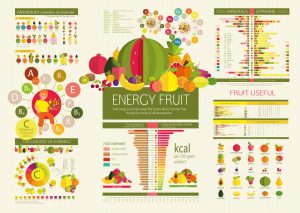Skip to content
Eat More With Fewer Calories

Have you heard of calorie density before? I hadn’t and I was surprised as I’ve been a student of healthy food and diets for over 30 years. I was especially surprised to learn that it is one of the main reasons that we overeat.
Calorie density is also known as energy density (hadn’t heard of that either) and is a measure of the calorie content of food relative to its weight or volume. The usual measure is the number of calories per 3.5 ounces (100 grams) of food.
Fruits and vegetables are examples of low calorie dense foods. They are also examples of foods that can fill up your plate at the same time as providing lower calorie totals. Another interesting fact is that low calorie dense foods are not necessarily low in carbohydrates so you can end up eating healthier foods with fewer calories leading to weight loss. A perfect trifecta!
I quote from the Nutrition Health Newsletter which is published by CSPI, a non-profit who has been “America’s Science-Based Food and Health Watchdog for Nearly 50 Years. You can check them out at cspinet.org

